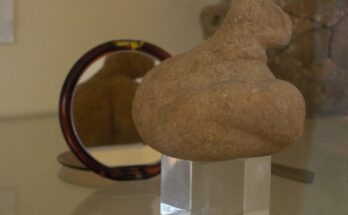
A recent study of ancient pottery from a 4,500-year-old Syrian town has found signs of child labor in the Early Bronze Age. The research, led by Dr. Akiva Sanders from Tel Aviv University and the National Museum in Copenhagen, looked at 450 pottery pieces from Tel Hama.
This town was part of the Ebla Kingdom, one of the earliest city-states in the region. The study shows that about two-thirds of these pots were made by children, some as young as seven years old. The findings were shared in the journal Childhood in the Past.
Researchers used fingerprints found on the pots to estimate the age and sex of those who made them. Fingerprints, which stay the same throughout a person’s life, helped the team measure palm size and the density of fingerprint ridges.
The study revealed that most of the pottery, mainly everyday items such as cups, was made by children. Older men were responsible for creating the rest of the pieces.
Sanders explained that, during the peak of the Ebla Kingdom, between 2400 and 2000 BC, cities in the region began relying on child labor to produce ceramics. Children, some as young as seven, were trained to make cups with consistent shapes.
These cups were used in daily life and at royal banquets. The demand for these was especially high during large feasts, where many cups would break and quick replacements were needed.
Use of child labor and gender equality in production
In ancient Tel Hama, child labor played a major role in pottery production, as was the case centuries later during the Industrial Revolution. Children, starting from the age of seven, were taught repetitive tasks to create pottery with precision.
This system ensured consistency in production, a method echoed in later times when children were used for similar purposes in factories. Interestingly, the study shows that both boys and girls contributed equally to this work, marking a gender-balanced effort.
The research also sheds light on a more intimate side of childhood in ancient Tel Hama. While children were busy with their pottery duties, they also crafted small figurines and miniature vessels on their own, without guidance from adults.
Sanders pointed out that these young potters likely learned from each other, using these creations as a way to explore their imagination. Even with the pressures of their labor, they found ways to express themselves creatively through these tiny, handmade pieces.
Pottery unearthed from Tel Hama in the 1930s, now housed in Denmark’s National Museum, offers valuable insights into both the craftsmanship of young potters and the social structure of the period.



